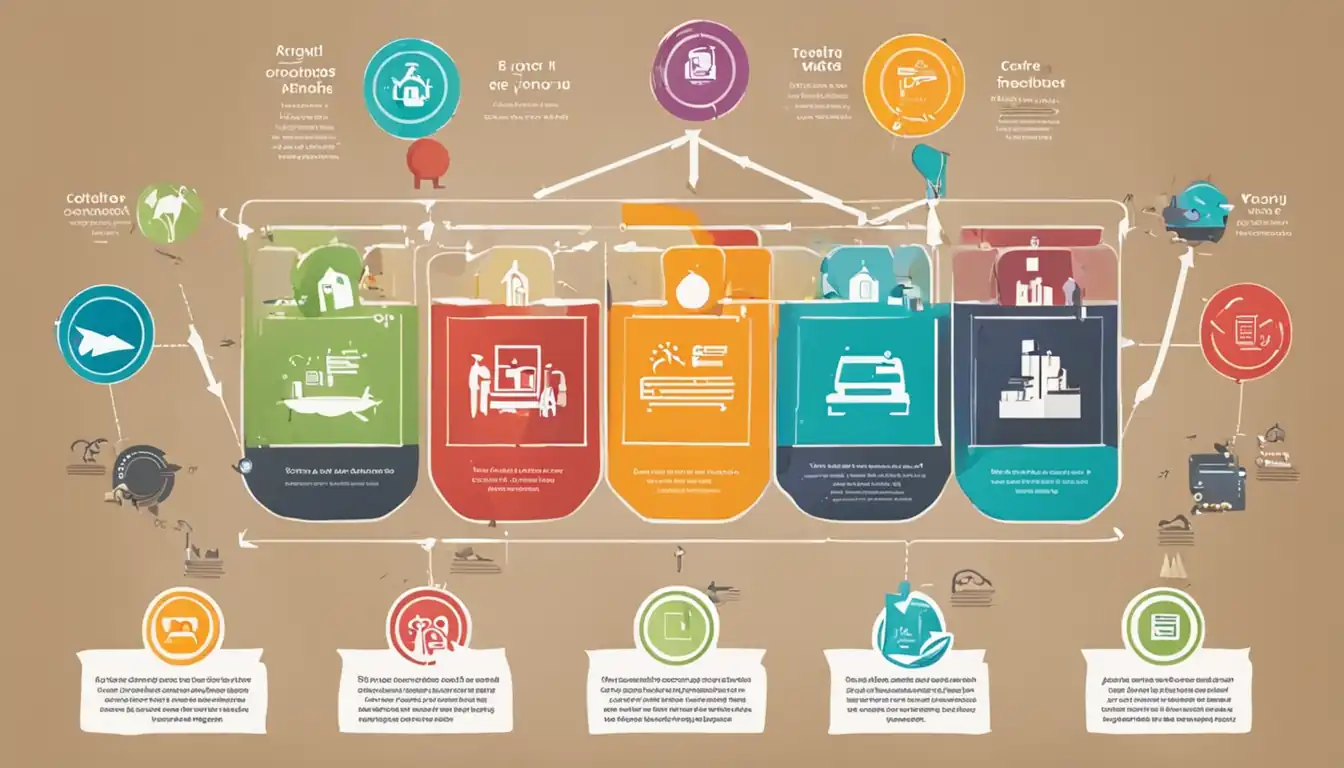Mastering SEO Content Repurposing

In the world of SEO, content is king. But what happens when your crown jewel starts losing its shine? That's where content repurposing comes in. It's like giving your old content a fresh coat of paint, making it relevant and engaging once again. In this post, we'll dive into the art of mastering SEO content repurposing and how it can take your strategy to the next level.
What is SEO Content Repurposing
Understanding the Basics
SEO content repurposing is the process of taking existing content and transforming it into different formats to reach a wider audience and improve search engine visibility. This strategy involves reusing, updating, or expanding on existing content to make it more valuable and relevant to your target audience.
Why It Matters for Your Strategy
Repurposing content is essential for maximizing the impact of your SEO efforts. By repackaging existing content in various formats such as videos, infographics, podcasts, or social media posts, you can attract new audiences and drive more traffic to your website. Additionally, repurposing content can help improve your search engine rankings by providing fresh and relevant information for search engines to index.
The Benefits of Repurposing Content

Repurposing content can provide numerous benefits for your SEO strategy and overall content marketing efforts. Here are some key advantages:
Boosting Your SEO Efforts
1. Improved Visibility: By repurposing content, you can reach a wider audience across different platforms and formats, increasing your chances of being discovered through search engines.
2. Increased Backlinks: When you repurpose content, you have the opportunity to create more linkable assets that can attract backlinks from other websites, boosting your site's authority and search engine rankings.
3. Targeting Different Keywords: Repurposing allows you to target new keywords or long-tail phrases that may not have been covered in your original content, expanding your reach in search results.
Extending the Lifespan of Your Original Ideas
1. Reinforcing Your Message: Repurposing content allows you to reinforce key messages and ideas by presenting them in different ways, ensuring that your audience retains important information over time.
2. Reaching New Audiences: Different audiences consume content in various formats, so repurposing allows you to cater to diverse preferences and attract new followers who may have missed your original piece.
3. Maximizing ROI: Instead of creating entirely new content from scratch, repurposing existing material can save time and resources while still delivering valuable information to your audience.
Identifying Content for Repurposing
Picking Evergreen Topics
When selecting content to repurpose, it's crucial to focus on evergreen topics. These are subjects that remain relevant and valuable to your audience over time. By choosing evergreen topics, you ensure that your repurposed content will continue to drive traffic and engagement long after its initial publication.
Analyzing Performance Metrics
Before repurposing any content, take the time to analyze its performance metrics. Look at data such as page views, social shares, and conversion rates to identify which pieces have resonated most with your audience. By focusing on high-performing content, you can maximize the impact of your repurposing efforts and ensure that you are providing value to your readers.
Best Practices in Content Repurposing
Content repurposing is a valuable strategy for maximizing the reach and impact of your content. By repackaging existing content in different formats or for different platforms, you can extend its lifespan and reach new audiences. However, to ensure success with content repurposing, it's important to follow best practices that prioritize quality and align with current SEO standards.
Keeping Quality in Mind
When repurposing content, it's essential to maintain the quality of the original piece. This means more than just copying and pasting text into a new format. Instead, focus on adding value to the content by updating statistics, incorporating new insights, or providing a fresh perspective on the topic. By enhancing the quality of your repurposed content, you can attract more readers and improve your SEO performance.
Key Points:
- Enhance the original content with updated information or additional insights.
- Ensure that the repurposed content is relevant and valuable to your target audience.
- Avoid duplicate content issues by making substantial changes to each iteration.
Aligning with Current SEO Standards
In addition to maintaining quality, it's crucial to align your repurposed content with current SEO standards. This includes optimizing titles, meta descriptions, and keywords for each new format or platform. By following SEO best practices, you can improve the visibility of your repurposed content in search engine results and drive more organic traffic to your website.
Key Points:
- Conduct keyword research to identify relevant terms for each piece of repurposed content.
- Optimize titles and meta descriptions with targeted keywords for improved search engine visibility.
- Ensure that all links are working correctly and point to relevant pages on your website.
By keeping quality in mind and aligning with current SEO standards, you can master the art of content repurposing and enhance the effectiveness of your overall SEO strategy.
Methods of Repurposing Content

Repurposing content is a great way to maximize the value of your existing material and reach a wider audience. Here are some effective methods for repurposing content:
Transforming Blog Posts into Infographics
One way to repurpose blog posts is by transforming them into visually appealing infographics. Infographics are highly shareable and can help you convey complex information in a more digestible format. To create an infographic from a blog post, identify the key points and data, then design a visually engaging graphic that presents this information in an easy-to-understand manner.
Creating Podcast Episodes from Webinars
Another effective method of repurposing content is by turning webinars into podcast episodes. Webinars are typically rich in valuable information and insights, making them ideal for repurposing into audio content. To create podcast episodes from webinars, extract the audio file from the webinar recording, edit it to remove any visual references, and add an introduction and conclusion to make it suitable for a podcast format. This allows you to reach audiences who prefer consuming content through audio channels.
Tools and Resources to Aid Repurposing
Software That Simplifies the Process
When it comes to repurposing SEO content, having the right tools can make a significant difference in efficiency and effectiveness. Here are some software options that can simplify the process:
Canva: A graphic design platform that allows you to create visually appealing images, infographics, and social media posts to repurpose your content.
BuzzSumo: Helps you identify popular topics and keywords related to your content, making it easier to tailor your repurposed content for maximum impact.
Grammarly: Ensures that your repurposed content is error-free and well-written, enhancing its readability and SEO value.
Hootsuite: Allows you to schedule and manage social media posts for distributing your repurposed content across various platforms.
Platforms for Effective Distribution
Once you have repurposed your SEO content, it's crucial to distribute it effectively to reach a wider audience. Here are some platforms that can help with distribution:
Medium: A popular blogging platform where you can publish your repurposed content to reach a new audience of readers.
LinkedIn Publishing: Utilize LinkedIn's publishing platform to share your repurposed content with a professional audience and establish yourself as an industry thought leader.
Pinterest: Ideal for sharing visual content such as infographics or images created from repurposed written content, driving traffic back to your website.
Quora: Engage with users by answering questions related to your repurposed content, establishing credibility and driving traffic through links back to your site.
By utilizing these tools and platforms effectively, you can master the art of SEO content repurposing and maximize the reach and impact of your valuable content assets.
Conclusion
Don't let your hard work go to waste - repurpose it! By understanding the basics, identifying the right content, and utilizing best practices and methods, you can breathe new life into your existing material. With the help of tools and resources, you'll be able to streamline the process and maximize the impact of your efforts. So go ahead, master SEO content repurposing and watch your strategy soar to new heights!